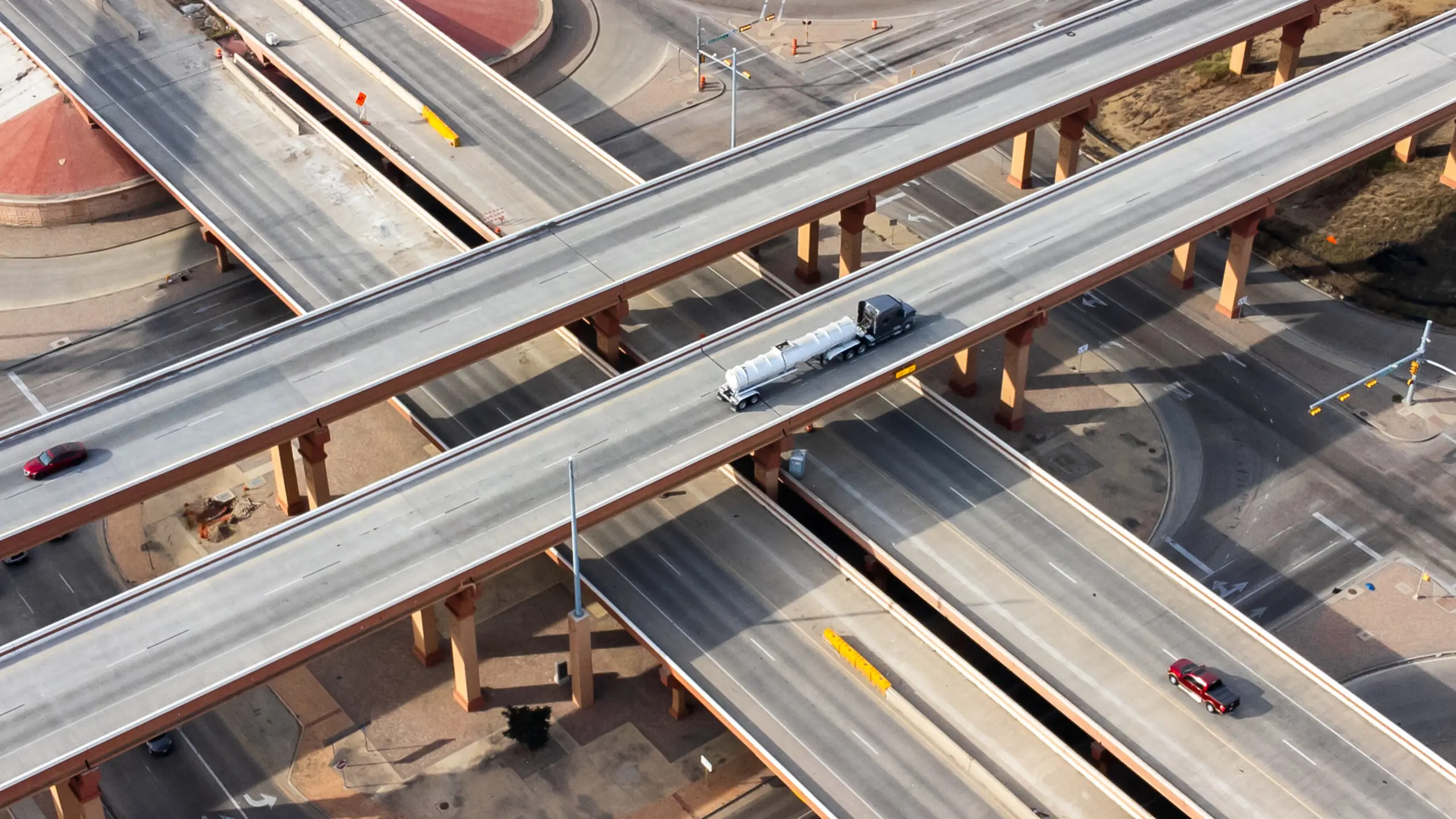Cross-border freight between the United States and Mexico requires more paperwork than a domestic shipment. Every load needs specific customs, import, and export documents depending on the direction of travel. Missing one can delay clearance, rack up storage fees, or even cause the shipment to be rejected at the border.
This article covers all essential documents for:
- Southbound shipments from the U.S. to Mexico
- Northbound shipments from Mexico to the U.S.
Documents required for southbound shipments from the U.S. to Mexico
A southbound shipment must clear U.S. export requirements and Mexican import requirements. Here are the key documents:
-
Bill of lading (BOL): The standard trucking contract showing shipper, consignee, cargo details, and route. This is issued by the carrier at pickup and travels with the freight.
-
Commercial invoice: Issued by the shipper and required by customs to calculate duties. Often paired with a packing list to verify cargo details.
-
Mexican import documents:
-
Pedimento – Mexico’s official customs import declaration, prepared by a licensed Mexican customs broker.
-
DODA (Documento de Operación para Despacho Aduanero) – a QR-coded document generated once the pedimento is filed and duties are paid. The driver must present the DODA at the checkpoint before crossing. It expires if not used within a set timeframe.
-
-
U.S. export filing (EEI/AES): Required if shipment value exceeds $2,500 or if goods fall under special export controls. Typically handled by a U.S. customs broker or freight forwarder.
-
Customs broker instructions: Shipper/exporter should provide clear instructions to the U.S. customs broker, including the Mexican broker’s details, to ensure smooth coordination.
-
Carta Porte (Mexico’s digital waybill): Once the trailer is handed off to a Mexican carrier, a Carta Porte is required for the domestic leg inside Mexico. It’s generated by the Mexican carrier, but U.S. brokers must ensure the shipper provides correct shipment data to avoid delays.
-
Other permits/certificates: Certain commodities (produce, hazmat, tech) require additional documentation like phytosanitary certificates or export licenses. Provided by the shipper.
A best practice: Confirm that the shipper has appointed a Mexican customs broker and that the commercial invoice and BOL are ready before dispatch. Carriers must pick up the DODA and related paperwork from the broker before crossing.
Documents required for northbound shipments from Mexico to the U.S.
A northbound shipment must clear Mexican export rules and U.S. import requirements. The required documents include:
-
Bill of lading (BOL): Can be through-written or issued separately by both the Mexican and U.S. carriers. Ensures cargo is documented throughout the trip.
-
Commercial invoice: Issued by the Mexican exporter, listing goods, values, and terms. Needed for U.S. Customs to assess duties. For returns or inter-company moves, equivalent proof of value is still required.
-
Mexican export documents:
-
Pedimento – the official export declaration filed by the Mexican customs broker.
-
DODA – generated for export clearance, serving as proof that the shipment is approved to leave Mexico. The driver must present this before exiting.
-
-
U.S. Customs entry: Filed by a licensed U.S. customs broker on behalf of the importer. Includes the commercial invoice, packing list, BOL, and any trade certificates (e.g., USMCA certificate of origin for tariff reductions). Brokers file electronically through the ACE system, but drivers still carry an Entry Manifest (paper or electronic) at the border.
-
Cargo release documentation: Issued by U.S. Customs and Border Protection (CBP) once duties are paid and inspections pass. May be paper or electronic.
-
Carrier documentation (Carta Porte or W-9):
-
If a Mexican carrier crosses into the U.S., they must present a Carta Porte for that leg.
-
If a U.S. drayage carrier takes over at the border, they provide a W-9 and carrier details to the broker. Customs requires a carrier of record for the crossing.
-
-
Special certificates/permits: Depending on the commodity, additional documents may include FDA Prior Notice (food), USDA phytosanitary certificates (plants), or TSCA statements (chemicals).
A best practice: U.S. customs brokers generally require three things up front:
- Commercial invoice
- Bill of lading
- Importer’s details (tax ID, customs bond, etc.)
Documents are often sent electronically to the crossing point so transfer drivers can print and present them, avoiding border delays.
A key takeaway
Whether southbound or northbound, customs brokers on both sides of the border play a central role in document preparation and clearance. Your role as a broker or intermediary is to:
- Confirm all brokers are appointed (U.S. and Mexican).
- Collect and verify commercial invoices and BOLs early.
- Ensure carriers know whether they need to pick up physical paperwork or if it’s handled electronically.
With the right preparation and partners like Cargado’s vetted network of carriers and experts, cross-border shipping can be as predictable as a domestic move.
